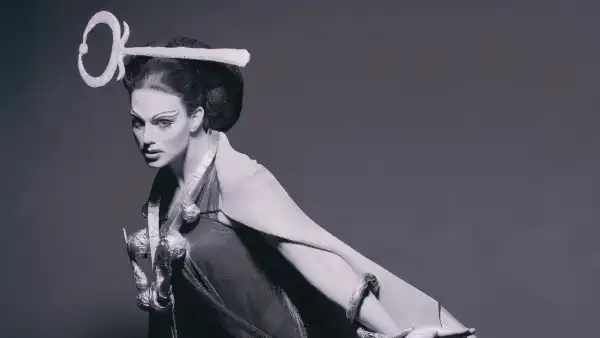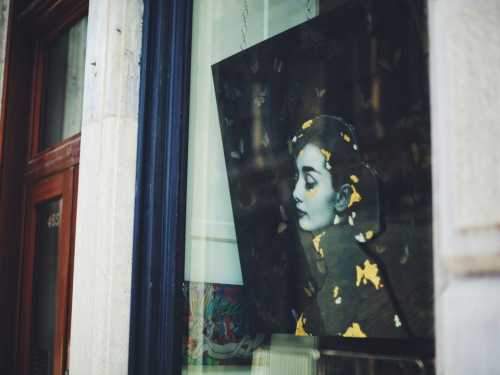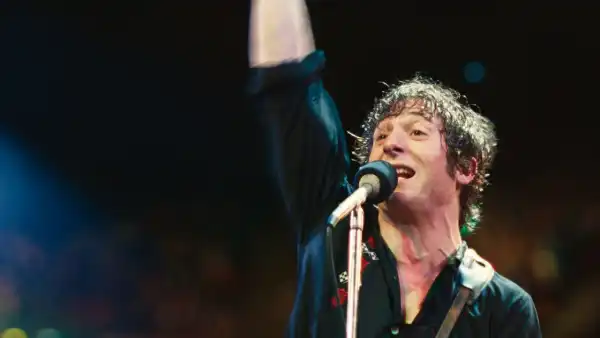
“Queer Eye” is the Netflix revival of the milestone makeover show that
originated, in 2003, as “Queer Eye for the Straight Guy” and ran on
Bravo for five life-stylish seasons. The reboot is fine company in
several contexts, for instance, when it is lending ambient zhuzh to your
home while you’re picking up around the place. Half-watching any of its
eight episodes, the viewer feels its aspirational anima infuse the
room.
Like a service magazine, the show foams with helpful hints and
propitious recipes as its team steers schlubs and slobs toward
self-improvement. The new generation of experts—who are, as ever, gay
and male and branded as the Fab Five—is based in Atlanta, ostensibly in
a white-brick, loft-like salon. They venture thence to city
neighborhoods, country towns, and faceless exurbs, in an American-made
pickup truck with great legroom. From time to time, back at HQ, one or
another of the experts poses before a piece of white-neon lettering: STYLE TASTE CLASS. A seductive and slippery set of values!
“The original show was fighting for tolerance,” one young host says.
“Our fight is for acceptance.” The original débuted on the eve of a wave
of gay-rights advances, and it entered pop culture in an era when the
“metrosexual” (a useful bourgeois type with a chest like a Ken doll’s)
still had some currency as a media figurine. Naturally, “Queer Eye” has
evolved its cultural politics in response to the way pop thoughts about
masculinity have changed since its first go-round. The world now seems
less binary, and the show has grown more limber and less campy. Still,
the reboot must confront abiding anxieties: at one point, in the course
of weaning a twentysomething gym rat off energy shakes and
flip-flops, one of the gurus counsels, “Just because you make an effort
with your wardrobe doesn’t make you a wuss.”
In front of the first episode, the viewer pauses in folding his laundry
to wonder how the show will manage to draw forth a sense of style from a thrice-divorced
trucker who favors denim cargo shorts. The viewer is gratified to see
that the team gains inspiration from the client’s love for his 1938
Plymouth. “Have you ever considered a flat cap?” the fashion guy asks.
It opens up the face. Later, during the same episode, the viewer makes a
mental note to TASTE guacamole made with Greek yogurt, rather than sour cream, as recommended
by Antoni, the resident food-and-wine guy.
Handsome Antoni, the breakout star of the new group, is often seen
squeezing avocados. His colleagues include Jonathan, who is both the
grooming authority and the class clown; Tan, who is a fashion stylist
preaching the gospel of slim-cut trousers; and Bobby, who, as the design
specialist, walks with a subcontractor’s swagger whenever striding into
a mephitic bachelor pad.
The fifth is Karamo, hailed as the “culture” expert. While Karamo has
been seen to pick up and look at a hardcover book in a persuasive
fashion, the word “culture” is a euphemism here. In truth, he is a
sympathetic talk therapist wrapped inside a life coach and zipped into a
fast-fashion bomber jacket. His résumé is perfect for this position
because it lists experience both as a social worker and on “The Real
World/Road Rules Challenge.” In one episode of “Queer Eye,” Karamo
teaches vulnerability while leading his charge through boxing lessons.
In another, he builds heart by way of zip-line trust falls.
All the while, he and his colleagues interlace the show’s themes of
material and psychological self-actualization. Upon remodelling the
bedroom of a gay twenty-seven-year-old preparing to come out to a family
member, Bobby says, “I wanted to give you an exposed closet—kind of
metaphoric.” Jonathan winningly discharges the hairdresser’s traditional
duty as head shrink, and he also has a tip for shaving back a widow’s
peak. “Don’t get stuck in a rut with your margarita,” Antoni cautions.
Half watchful, one struggles not to dwell on CLASS conflict and related
tensions as they intrude on the third episode. Here, the makeover of a
Nascar dad involves the shunning of a hat that appears to be not merely
a “Make America Great Again” cap but a bootleg variant thereof. I
started to wonder if the producers of “Queer Eye” misjudged their
audience’s appetite for this sort of thing. Topical politics, rearing up
at this angle, threatens to shatter the scented-candle mood of the
scene. But not to worry: Karamo and the makeover client share a
cross-cultural heart-to-heart bonding session. A breeze of good will
clears the irritation swiftly, and we proceed to the tear-strewn reveal
of an interior renovation.
Sourse: newyorker.com






